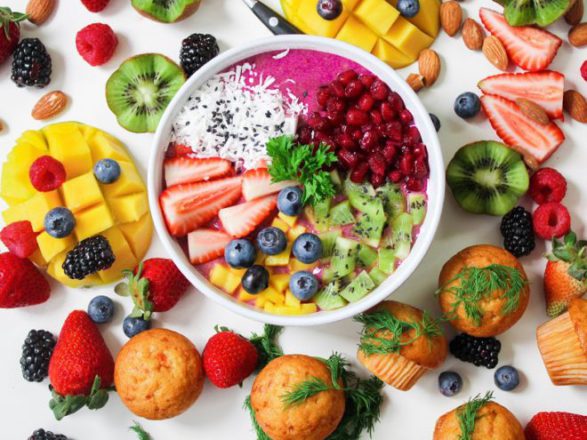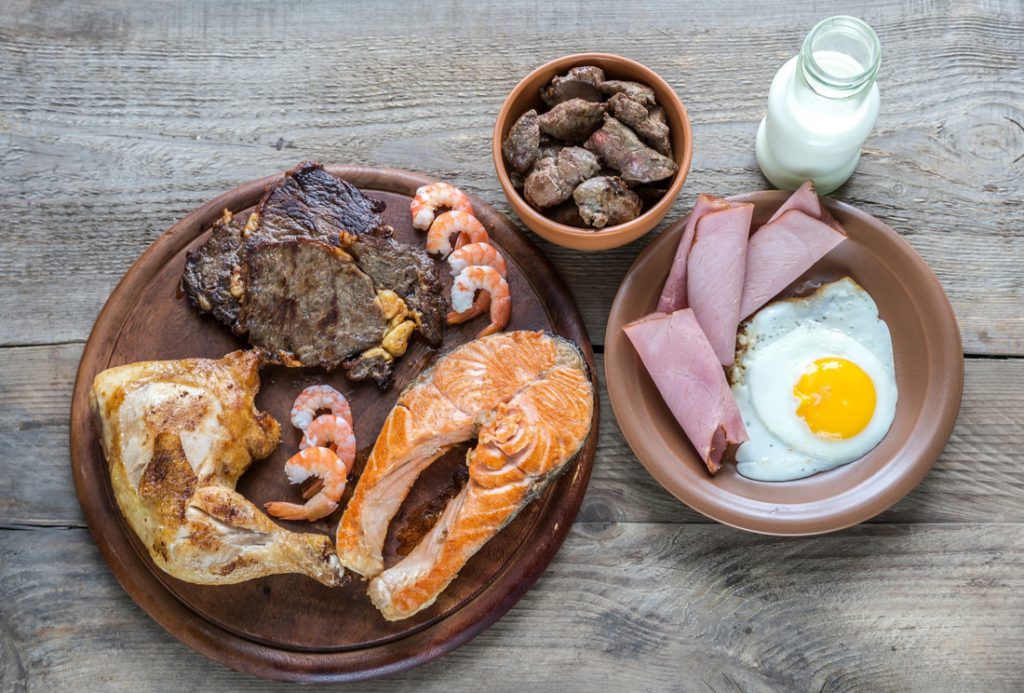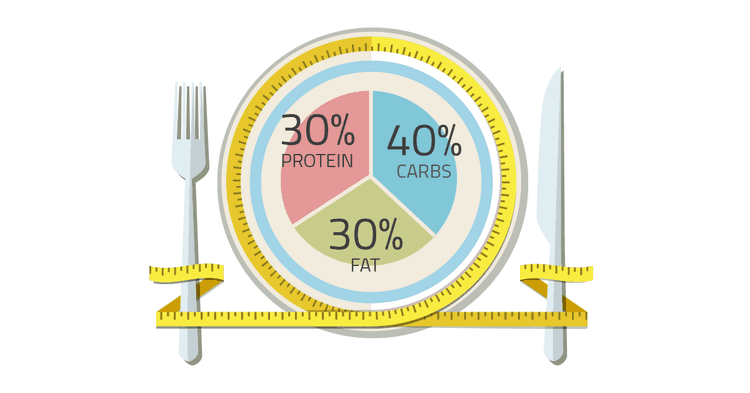There are several types of balanced diets are there around the world. A balanced diet is a practice of eating food at regular intervals to decrease, increase, or maintain bodyweight that helps prevent diseases and to maintain health. This article gives you an overview of 4 types of balanced diet practices that are less discussed.
Table of Contents
4 types of balanced diet practices
1. Raw food diet
It is otherwise called Raw foodism or Rawism. As the name suggests, the person should eat uncooked and unprocessed food, preferably organic, and drinks that are truly plant-based. Raw food diets may incorporate a wide variety of fruits, vegetables, nuts, seeds, and dairy products but generally not foods that have been pasteurized, homogenized, or produced with the use of food additives.
Weight loss is not the main aim of raw foods, but switching to raw foods may lead to weight loss sometimes. Raw foods are rich in fiber, vitamins, and minerals. There are some studies that claim, cooking destroys water-soluble vitamins i.e., vitamin B and vitamin C.

By eliminating processed and pasteurized foods, it is less likely to cause cardiovascular diseases. Some people consider eating raw chicken, meat, and eggs. As per the Centers for Disease Control (CDC), uncooked animal products are most likely to cause food contamination.
What to eat:
Raw fruits and raw vegetables, dried fruits and vegetables, soaked and sprouted beans, other legumes, grains, raw nuts and seeds, nut milk, including almond milk, coconut milk, olive oil or coconut oil, dried fruits.
What to avoid:
All cooked or processed foods, refined oils, table salt, refined sugars and flour, coffee, tea, alcohol, and pasta.
2. Vegetarian diet
A vegetarian diet is one of the well-known types of balanced diet. Vegetarían diet involves plant foods, some animal products, honey, milk, ghee, and eggs. And involves abstaining from eating meat, fish, and poultry. some studies estimate that over 18% of the Global population are vegetarians.
The reason why most people opt vegetarian diet is because of its health benifits, or religious, or personal reasons. studies show that a meat-free diet can lead to better health for several reasons. vegetarians have better diet quality than the diet that includes meat.
There are several variations of vegetarian diets are there.
Lacto-ovo-vegetarian diet:
As the name suggests, this diet eliminates meat, fish, and poultry but allows eggs and dairy products.
Lacto-vegetarian diet:
As the name suggests, this diet eliminates meat, fish, poultry, and eggs but allows dairy products.
Ovo-vegetarian diet:
This diet eliminates meat, fish, poultry, and dairy products but allows eggs.
Pescetarian diet:
This variation eliminates meat and poultry but allows fish and it allows eggs and dairy products occasionally.
Vegan diet:
This diet is quite popular. This diet 100% plant-based and 0% animal-based. It eliminates meat, fish, poultry, eggs and dairy products, even honey – as it made by honey bees.
Flexitarian diet:
A mostly vegetarian diet that comes with occasional meat, fish, or poultry.
Related article: Some other diets of the world
3. The Dukan diet
In 1975, Pierre Dukan, a former nutritionist, developed a diet and named after him, The Dukan diet.
The Dukan diet is a high protein, low carbohydrate eating plan especially designed for weight loss in obese people. The Dukan Diet claims to produce permanent weight loss without hunger.
The Dukan diet focuses on natural foods rather than packed foods. On this Dukan diet, only 100 foods are allowed. Out of which 68 are protein foods and 32 are vegetables. This diet is not calorie-restricted.
It is fine to eat anything as long as you are on the list of 100 foods provided. Increasing protein intake helps you in weight loss and gain muscle.

The Dukan diet can be explained in four phases.
Phase 1: The attack phase
First 10 days, the dieter can eat unlimited lean protein including 1.5 tablespoons of oat bran and at least 6-8 cups of water per day. An increase in more lean protein is more likely to kick-start the metabolism.
Phase 2: The cruise phase
In this phase, the dieter is asked to eat Non-starchy Vegetables on alternate days plus 2 tablespoons of oat bran every day.
Usually, this phase continues for several months or even a year.
Phase 3: The consolidation phase
This diet continues 5 days for every pound lost in phases 1 and 2. This stage does not aim to lose weight but to avoid regaining it. You can have unlimited servings of lean protein and veggies plus 2.5 tablespoons of oat bran daily.
Phase 4: Stabilization Phase
In this phase, the dieter can eat whatever they want in those 100 foods. However, they can have one full protein day in a week and 3 tbsp of oat bran each day. 30 minutes of exercise is recommended daily. If a person gains weight again, he/she should go with phase 2 or 3.
What to eat:
The list of 100 foods is provided on their official website.
4. The Zone diet
The Zone diet was made by Barry Sears, a biochemist. Sears believes diet-incited inflammation, is the reason we put on weight, grow sick, and age quicker.
The thought behind the Zone diet is that the individuals who follow it will reset their metabolism, diabetes, and other chronic health conditions. Carbs, protein, and fat are all permitted in the zone diet, but in a specific ratio. It aims for a nutritional balance of 30% protein, 30% fats, and 40% carbs preferably low GI (glycemic index) foods in all meals and snacks.

Low GI foods take more time to digest and are less likely to cause a blood sugar spike after eating. The diet advocates eating five times a day with 3 meals and 2 snacks. It allows people to consume healthy fats and antioxidants.
There are several benefits of being in the Zone. Losing excess body fat, Maintaining wellness, may also help you to think better.
What to eat:
Healthy carbs that are low on the glycemic index (simply complex carbs), egg whites, fish, poultry, lean beef or low-fat dairy, monounsaturated fats include olive oil, avocado, or almonds.
What to avoid:
Starchy vegetables, carbs that are high on the glycemic index (simple carbs), Transfats, soft drinks, alcohol.
Get the eBook
The conclusion
There are many types of balanced diet practices are there to follow. Theoretically, no diet in the world is best to follow. The best one is that gives you the good result. Read the eBook mentioned above to know the different types of diet practices in the world.
I hope this article (4 types of balanced diet practices) is knowledgeable. Share the knowledge with your friends ❤️
Happy learning 🙂